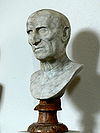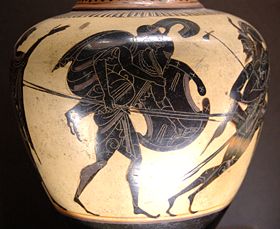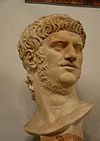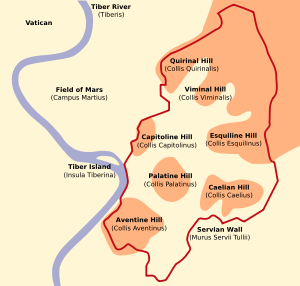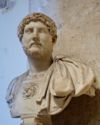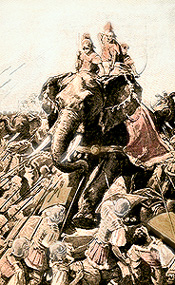How Well Do You Know Roman History?

Test your knowledge of Roman History, covering key events, figures, and foundational aspects from ancient Rome.
- 1.
What does SPQR stand for?
- A.
Substratus Pontifex Quadrupedans Rabidus
- B.
Sterculinum Praegelidus Quadrifidus et Ruditum
- C.
Senatus et Populus Quorum Romanorum
- D.
Sextus Proavitum Quidam Raptoris est
- E.
Septum Praetorius Quietus et Repletus est
Correct Answer
C. Senatus et Populus Quorum RomanorumExplanation
SPQR stands for Senatus et Populus Quorum Romanorum.Rate this question:
-
- 2.
Who was the first of the four emperors in the year of the four emperors?
- A.
Otho
- B.
Galba
- C.
Vitellius
- D.
Vespasian
- E.
Tiberius
Correct Answer
B. GalbaExplanation
Galba was the first of the four emperors in the year of the four emperors. After the death of Nero in 68 AD, a power struggle ensued, leading to a series of short-lived emperors. Galba, a Roman general, was declared emperor by his troops in Spain. He marched on Rome and was recognized as emperor in 69 AD. However, his reign was marked by financial difficulties and political unrest, leading to his assassination after just seven months in power.Rate this question:
-
- 3.
Who overthrew the last Roman king of the Tarquin monarchy in 509 B.C.?
- A.
Lucius Junius Brutus
- B.
Gaius Julius Caesar
- C.
Marcus Vipsanius Agrippa
- D.
Tiberius Sempronius Gracchus
- E.
Publius Cornelius Scipio Aemilianus Africanus Numantinus
Correct Answer
A. Lucius Junius BrutusExplanation
Lucius Junius Brutus is the correct answer because he played a significant role in the overthrow of the last Roman king of the Tarquin monarchy in 509 B.C. He was a Roman politician and founder of the Roman Republic. Brutus, along with his fellow conspirators, led a successful revolt against King Tarquin and established a new system of government, replacing the monarchy with a republic.Rate this question:
-
- 4.
Which refugee from Troy was the legendary founder of Alba Longa near Rome?
- A.
Silivius
- B.
Iulus Ascanius
- C.
Brutus
- D.
Aeneus
- E.
Dardanus
Correct Answer
D. AeneusExplanation
Aeneus is the correct answer because he is the legendary founder of Alba Longa near Rome. Aeneus was a refugee from Troy and the son of Anchises and Venus. After the fall of Troy, Aeneus embarked on a journey that eventually led him to Italy. He settled in the region and became the ancestor of the Roman people. Alba Longa was founded by Aeneus and became an important city in Roman mythology and history.Rate this question:
-
- 5.
Which Roman Emperor is said to have played a musical instrument as he watched Rome burn?
- A.
Tiberius Claudius Caesar Augustus Germanicus
- B.
Gaius Julius Caesar Augustus Germanicus (Caligula)
- C.
Nero Claudius Caesar Augustus Germanicus
- D.
Marcus Cocceius Nerva
- E.
Publius Cornelius Scipio Aemilianus Africanus Numantinus
Correct Answer
C. Nero Claudius Caesar Augustus GermanicusExplanation
Nero Claudius Caesar Augustus Germanicus is the correct answer because he is famously known for playing the lyre, a musical instrument, while Rome was burning during the Great Fire of Rome in 64 AD. This event is often associated with Nero's alleged indifference and lack of concern for the suffering of his people.Rate this question:
-
- 6.
Which Roman general made arguably the greatest reforms to the Roman Army in about 107 B.C.?
- A.
Gaius Marius
- B.
Publius Cornelius Scipio Aemilianus Africanus Numantinus
- C.
Quintus Caecilius Metellus Numidicus
- D.
Gaius Popillius Laenas
- E.
Nero Claudius Caesar Augustus Germanicus
Correct Answer
A. Gaius MariusExplanation
Gaius Marius is the correct answer because he is known for making significant reforms to the Roman Army around 107 B.C. These reforms included allowing landless citizens to join the army, providing them with weapons and armor, and creating a standing, professional army that was loyal to the general rather than to the state. This allowed for a more efficient and effective military force, which played a crucial role in the expansion and success of the Roman Empire.Rate this question:
-
- 7.
The Emperor Augustus Caesar (Octavian) was born in a neighborhood on which Roman hill?
- A.
Aventine Hill
- B.
Esquiline Hill
- C.
Palatine Hill
- D.
Capitoline Hill
- E.
Caelian Hill
Correct Answer
C. Palatine HillExplanation
The Emperor Augustus Caesar, also known as Octavian, was born in a neighborhood on Palatine Hill. This hill is one of the seven hills of Rome and was considered one of the most prestigious residential areas in ancient Rome. It was also the location of the palaces of the Roman emperors, including Augustus Caesar. Being born in this neighborhood would have given Augustus a privileged upbringing and a strong connection to the center of power in Rome.Rate this question:
-
- 8.
Who was Emperor when the Roman Empire reached its height?
- A.
Marcus Cocceius Nerva
- B.
Publius Aelius Hadrianus
- C.
Marcus Ulpius Nerva Traianus
- D.
Titus Aurelius Fulvus Boionius Arrius Antoninus
- E.
Antoninus Pius
Correct Answer
C. Marcus Ulpius Nerva TraianusExplanation
Marcus Ulpius Nerva Traianus, also known as Trajan, was the Emperor when the Roman Empire reached its height. He ruled from 98 AD to 117 AD and is considered one of the greatest Roman emperors. During his reign, the Roman Empire expanded to its largest territorial extent, reaching its height in terms of military conquests and economic prosperity. Trajan's rule is often referred to as the "Golden Age" of the Roman Empire. He implemented various public works projects, improved infrastructure, and established a stable government, contributing to the Empire's peak of power and influence.Rate this question:
-
- 9.
Which emperor built a wall across northern Great Britain?
- A.
Marcus Ulpius Nerva Traianus
- B.
Marcus Aurelius Antoninus Augustus
- C.
Lucius Aurelius Verus
- D.
Titus Aurelius Fulvus Boionius Arrius Antoninus
- E.
Publius Aelius Hadrianus
Correct Answer
E. Publius Aelius HadrianusExplanation
Publius Aelius Hadrianus, also known as Hadrian, is the emperor who built a wall across northern Great Britain. Hadrian's Wall was constructed during his reign from 122 AD to 128 AD. The wall was built to mark the northernmost frontier of the Roman Empire and served as a defensive fortification. It stretched across approximately 73 miles, from the east coast to the west coast of Britain, and was intended to control and regulate movement between Roman-controlled territory and the northern tribes. Hadrian's Wall is now a UNESCO World Heritage Site and a popular tourist attraction in the United Kingdom.Rate this question:
-
- 10.
Who commanded the Roman army at the Battle of Asculum?
- A.
Pyrrhus of Epirus
- B.
Consul Publius Decius Mus
- C.
Lucius Mestrius Plutarchus
- D.
Consul Gaius Julius Caesar
- E.
Consul Publius Valerius Laevinus
Correct Answer
B. Consul Publius Decius MusExplanation
Publius Decius Mus commanded the Roman army at the Battle of Asculum.Rate this question:
-
Quiz Review Timeline +
Our quizzes are rigorously reviewed, monitored and continuously updated by our expert board to maintain accuracy, relevance, and timeliness.
-
Current Version
-
Jan 11, 2023Quiz Edited by
ProProfs Editorial Team -
Jul 05, 2009Quiz Created by
Valdar1978
 Back to top
Back to top




